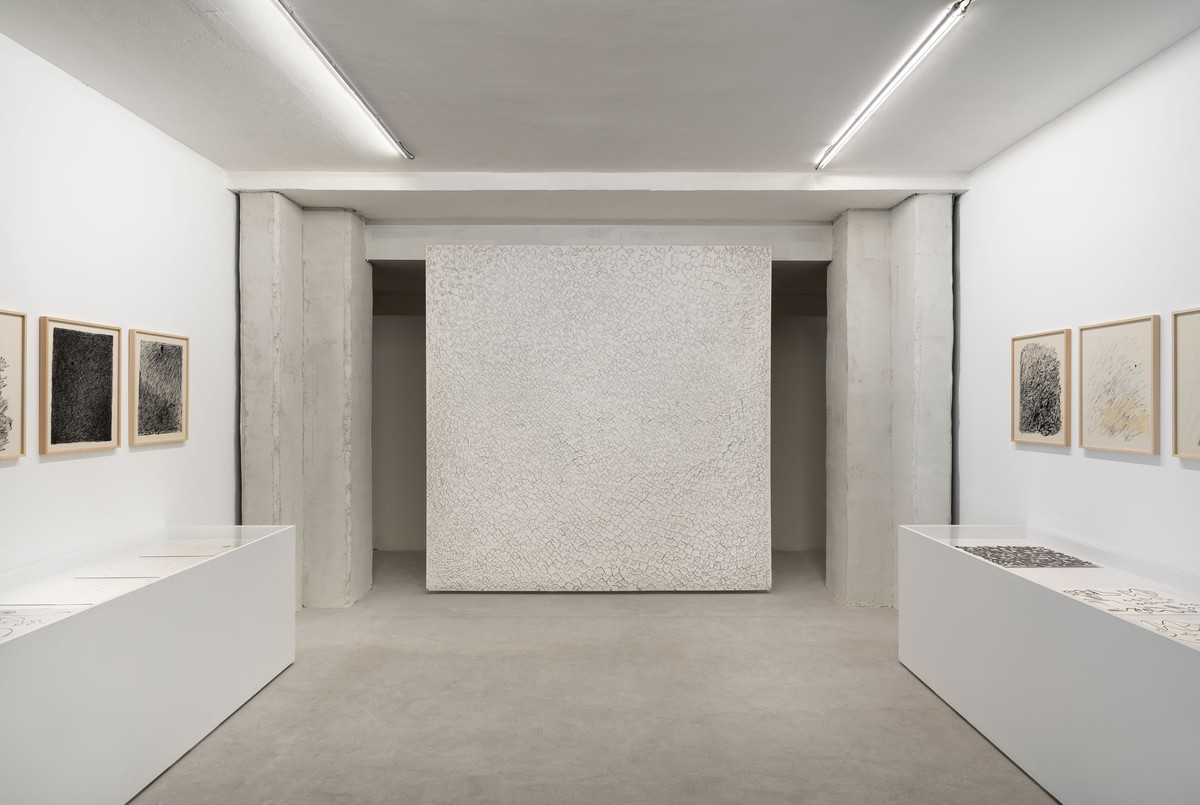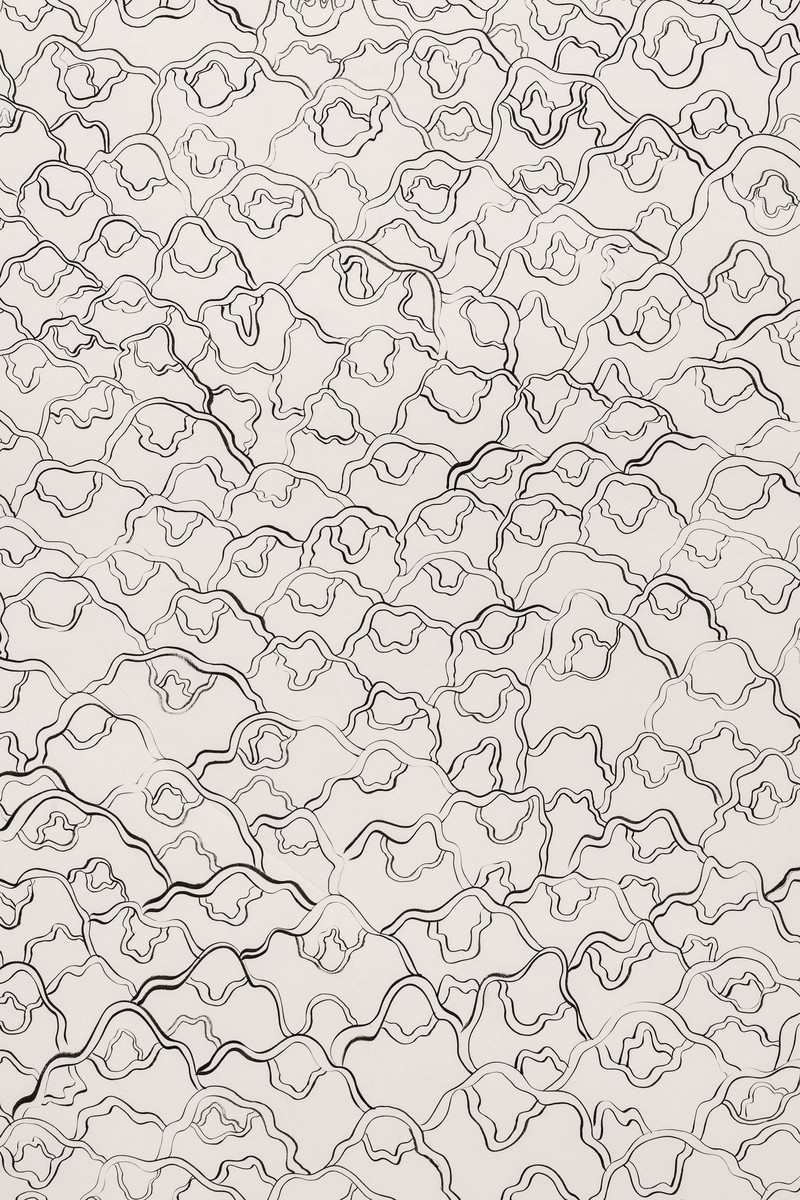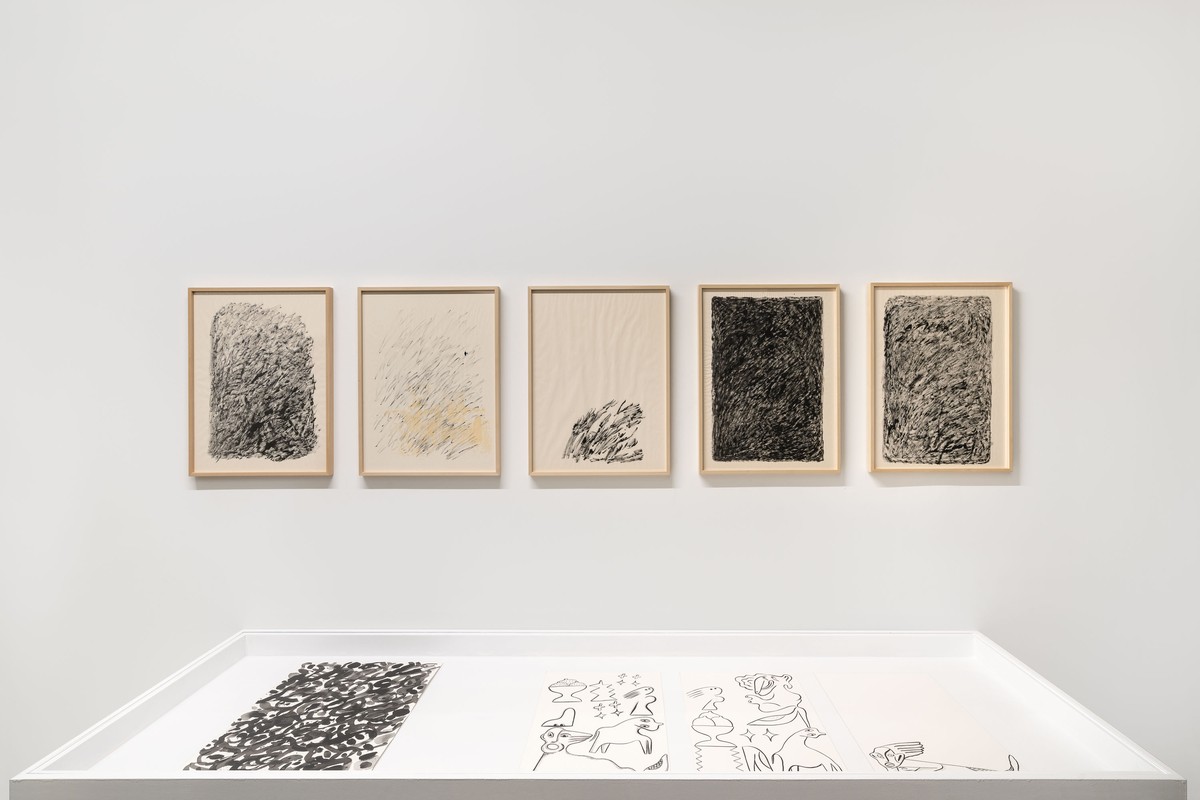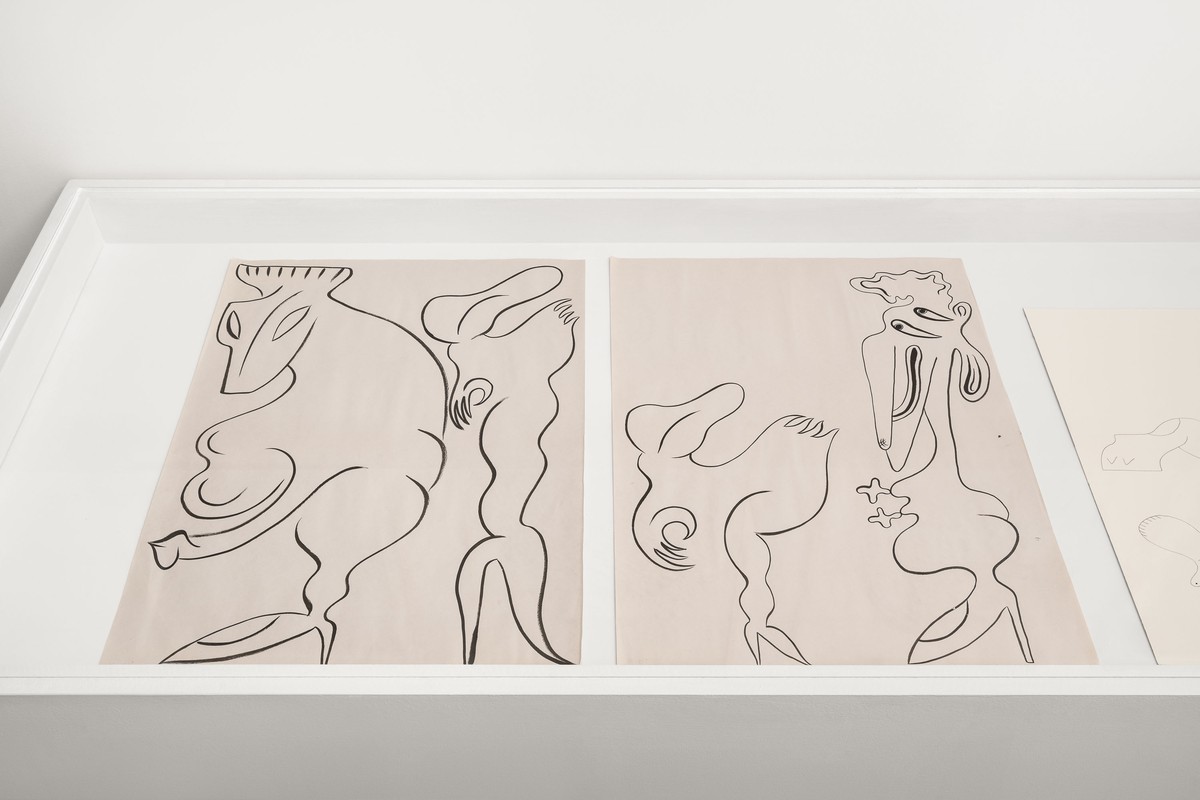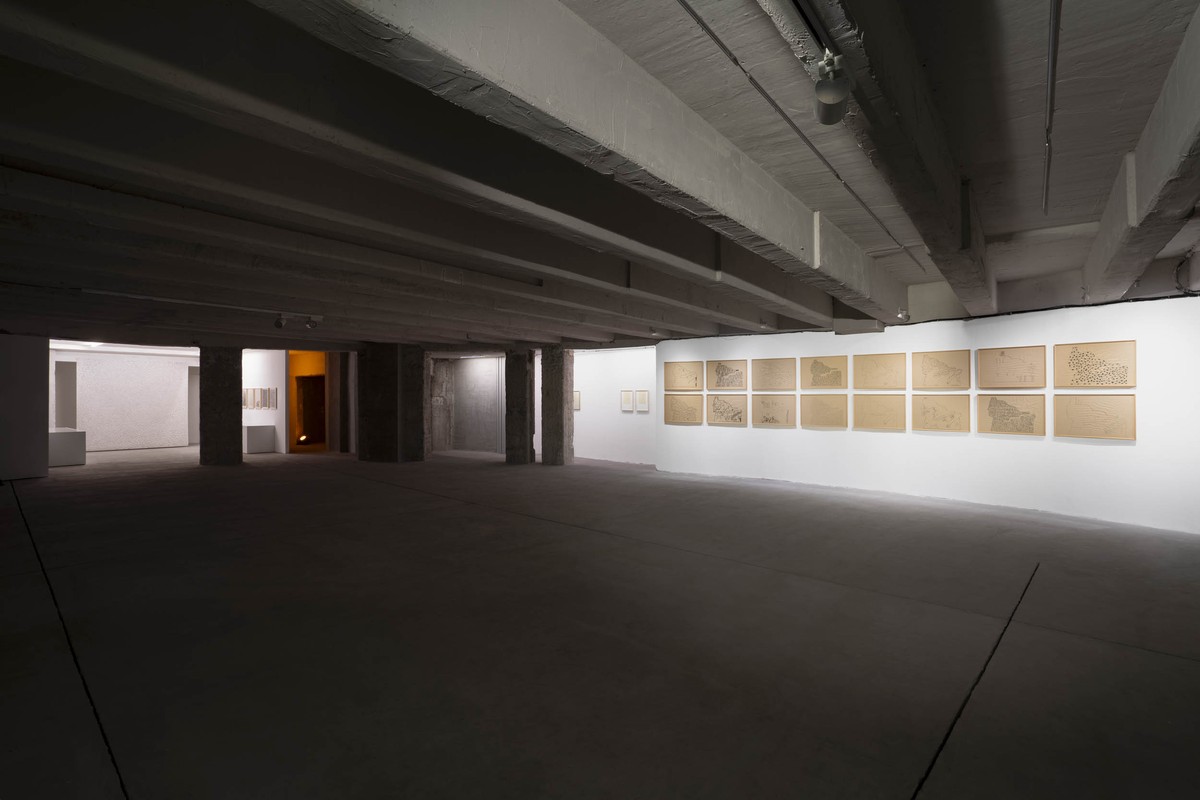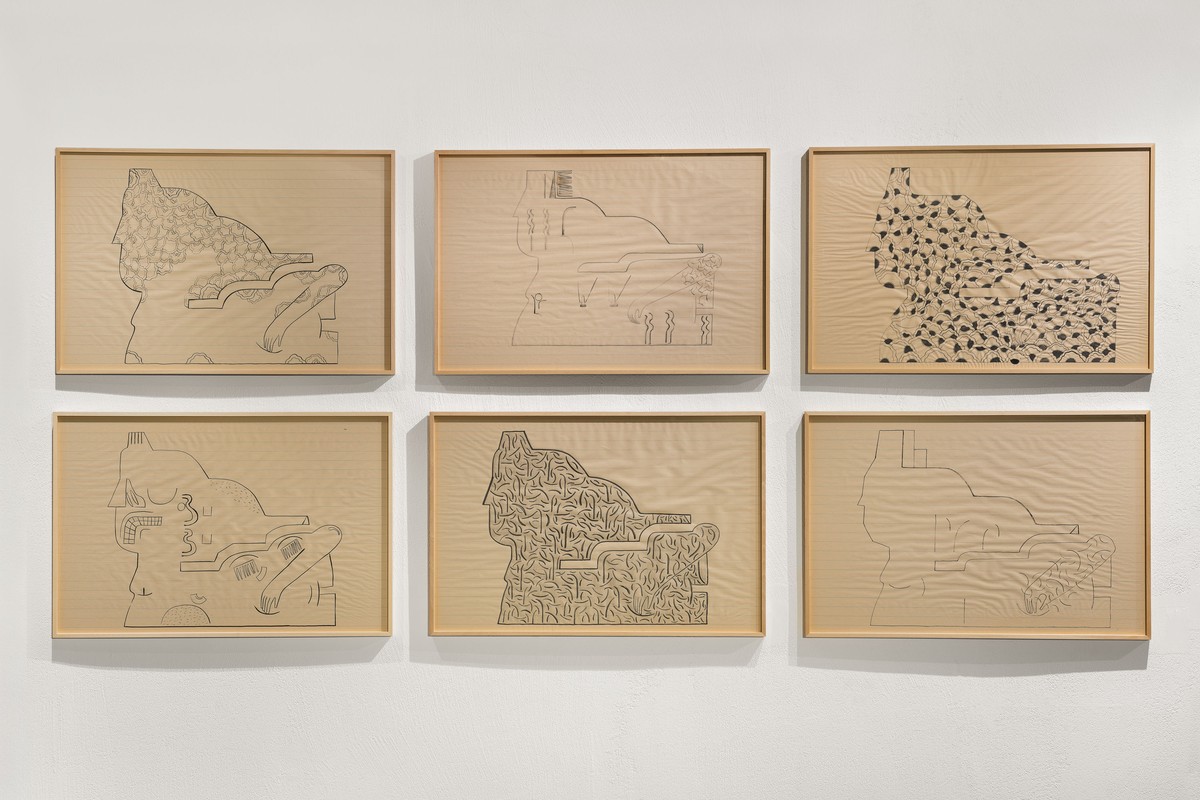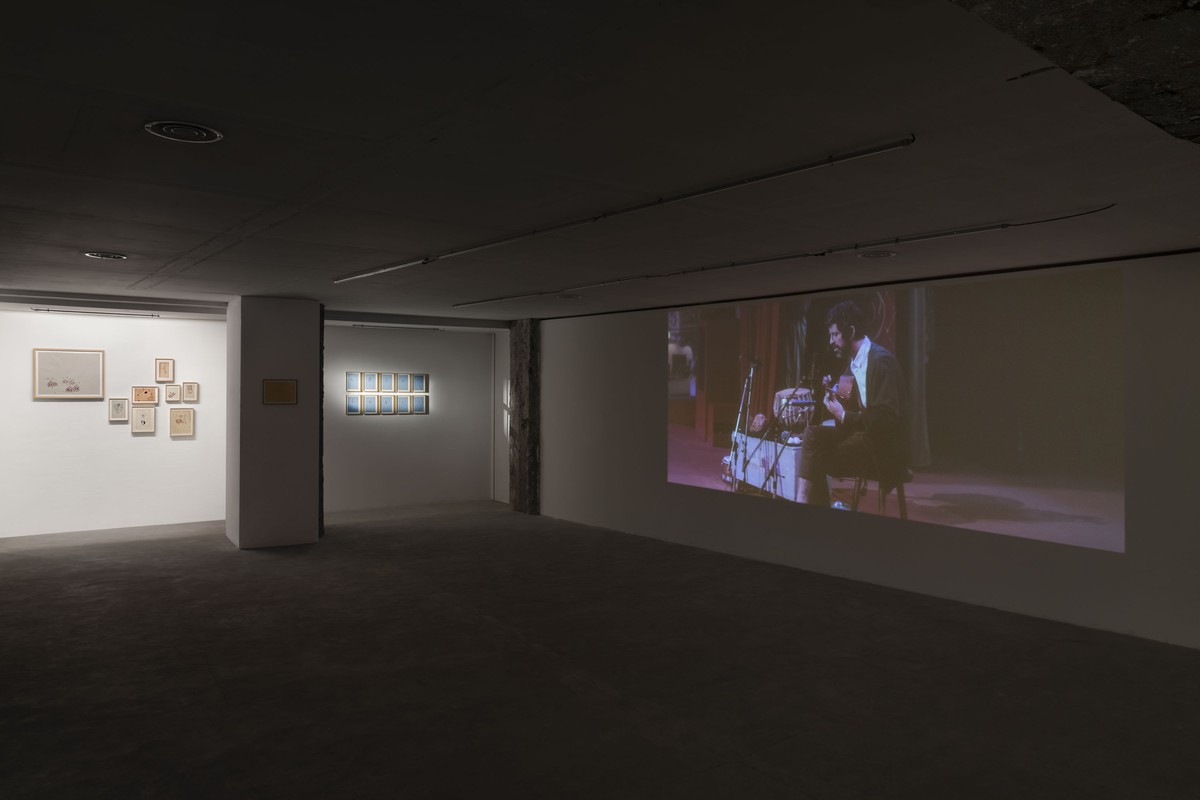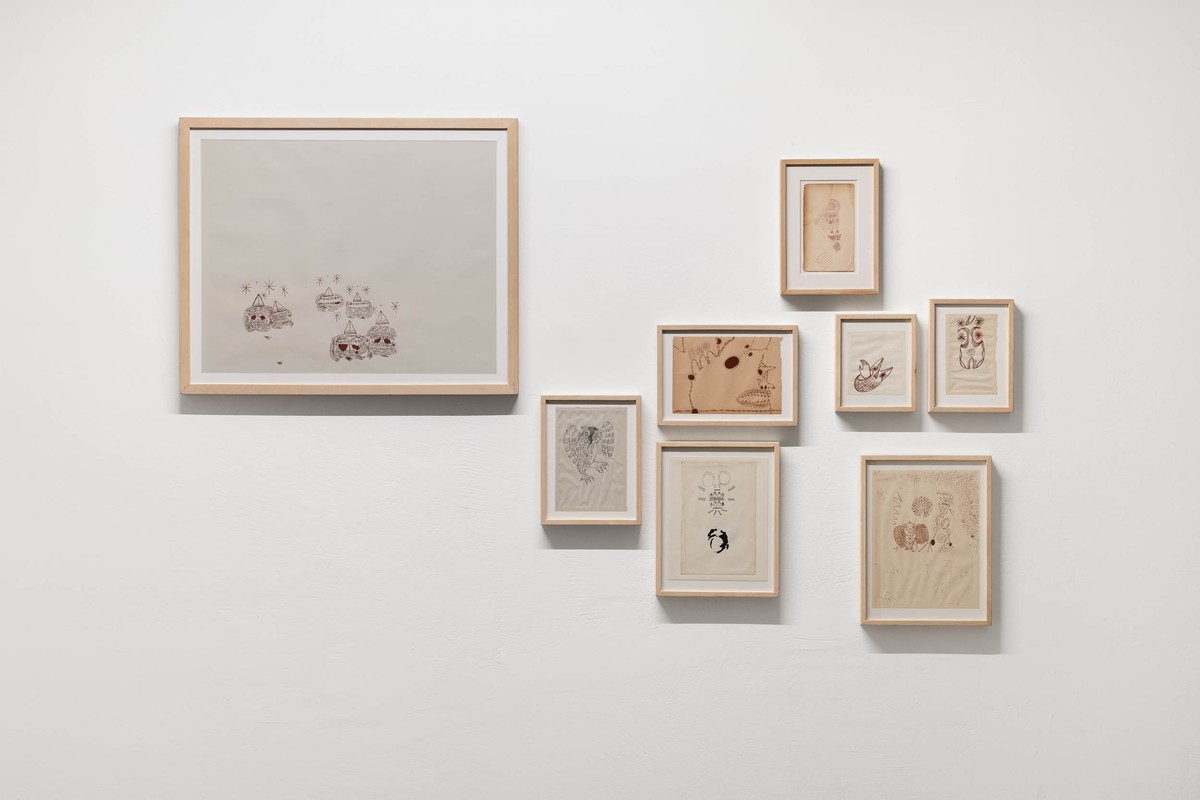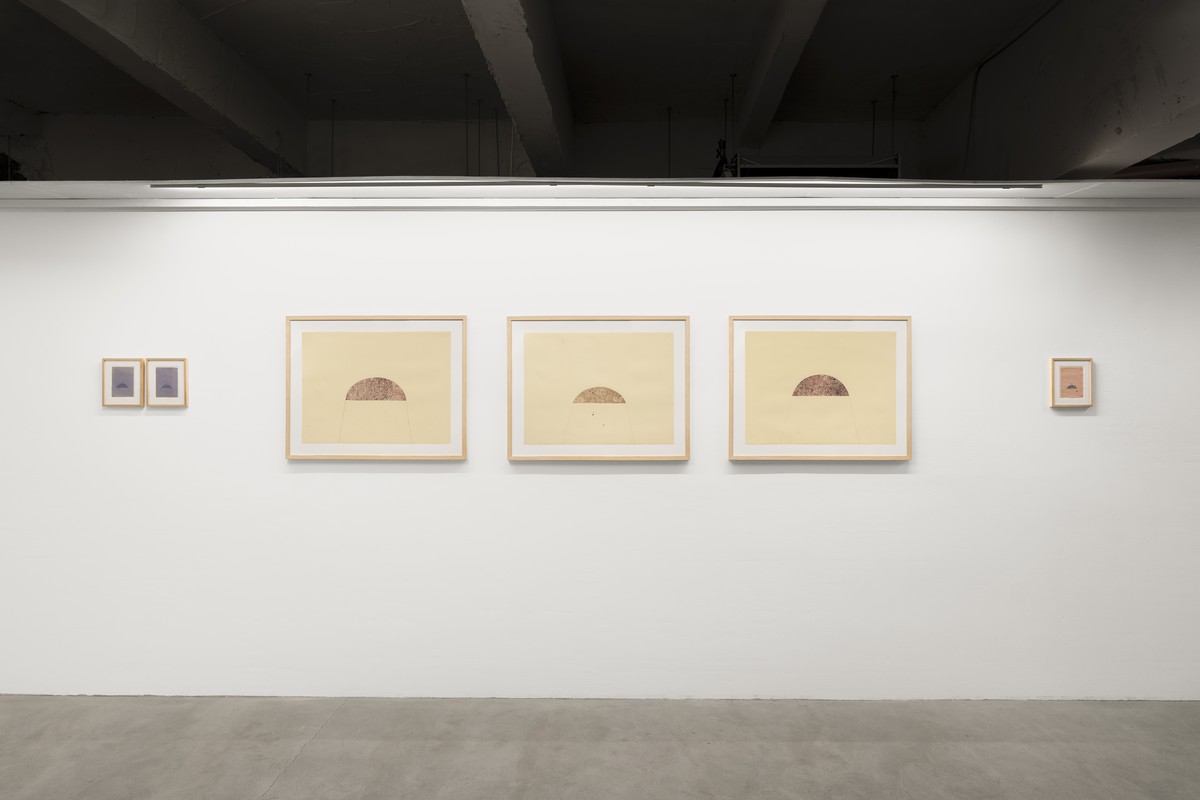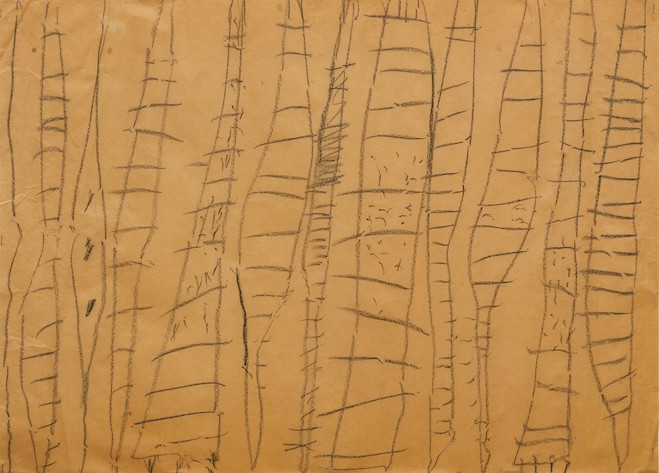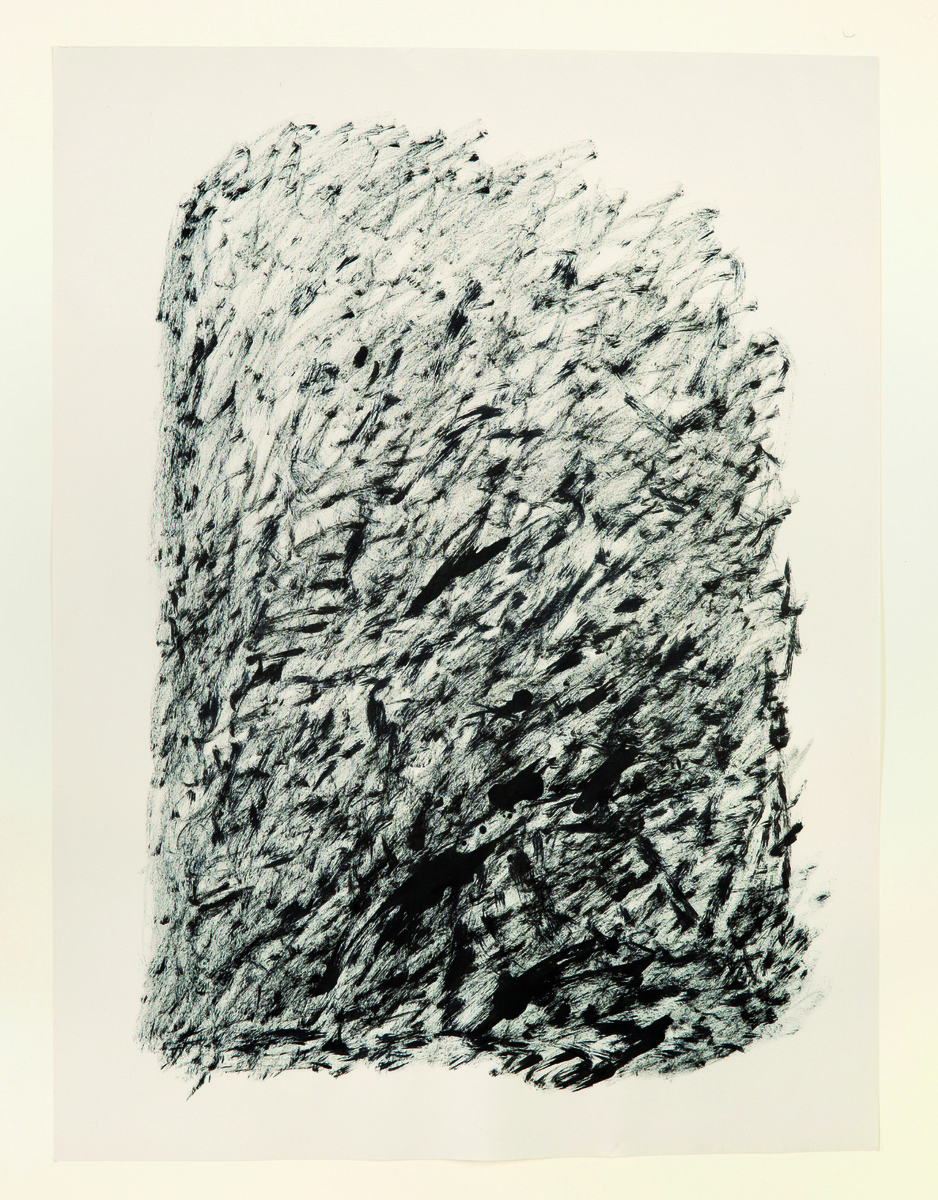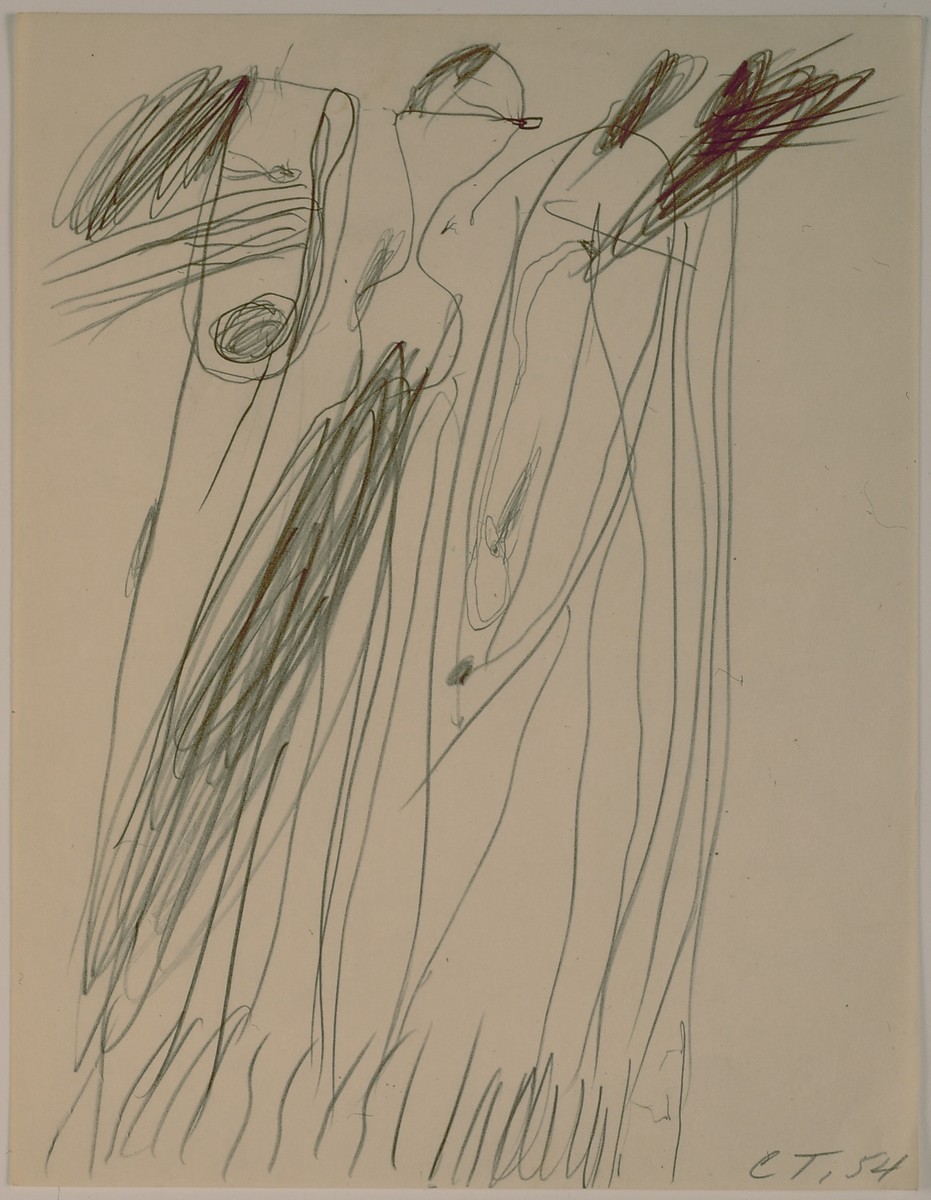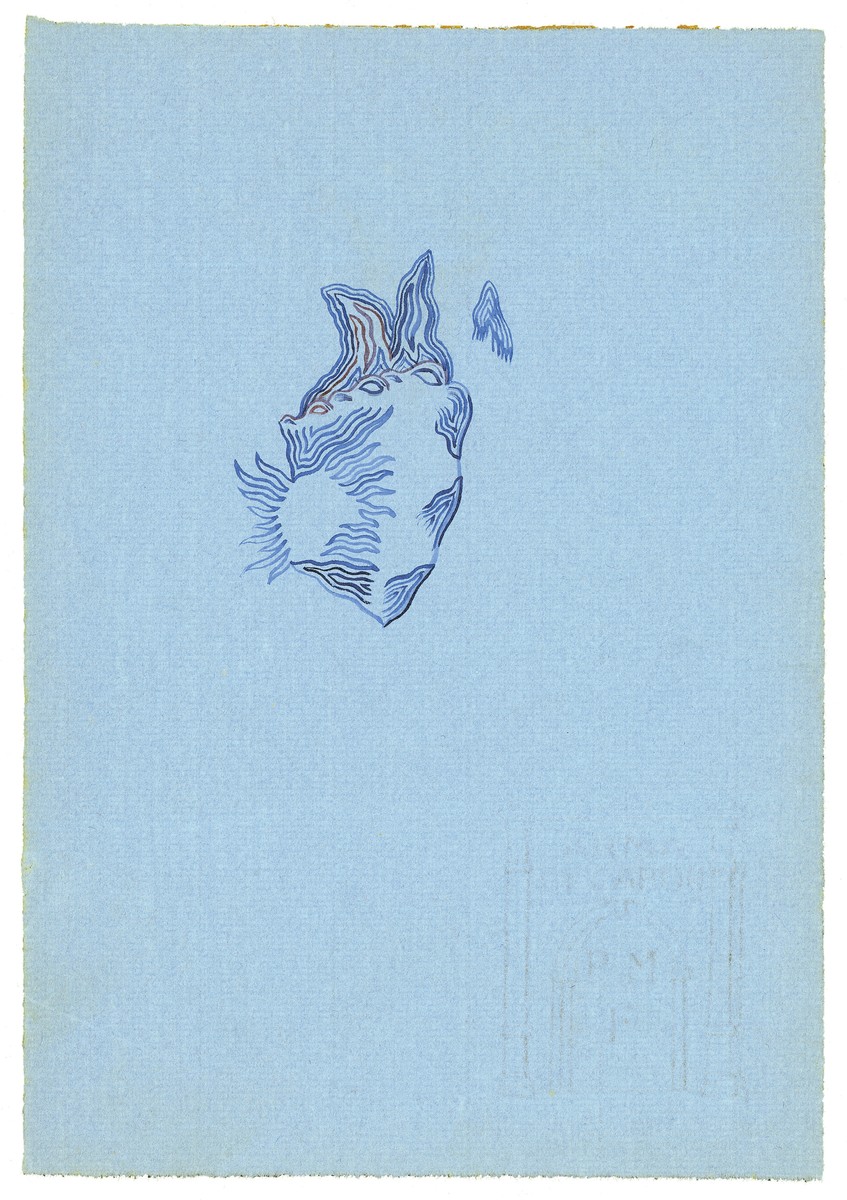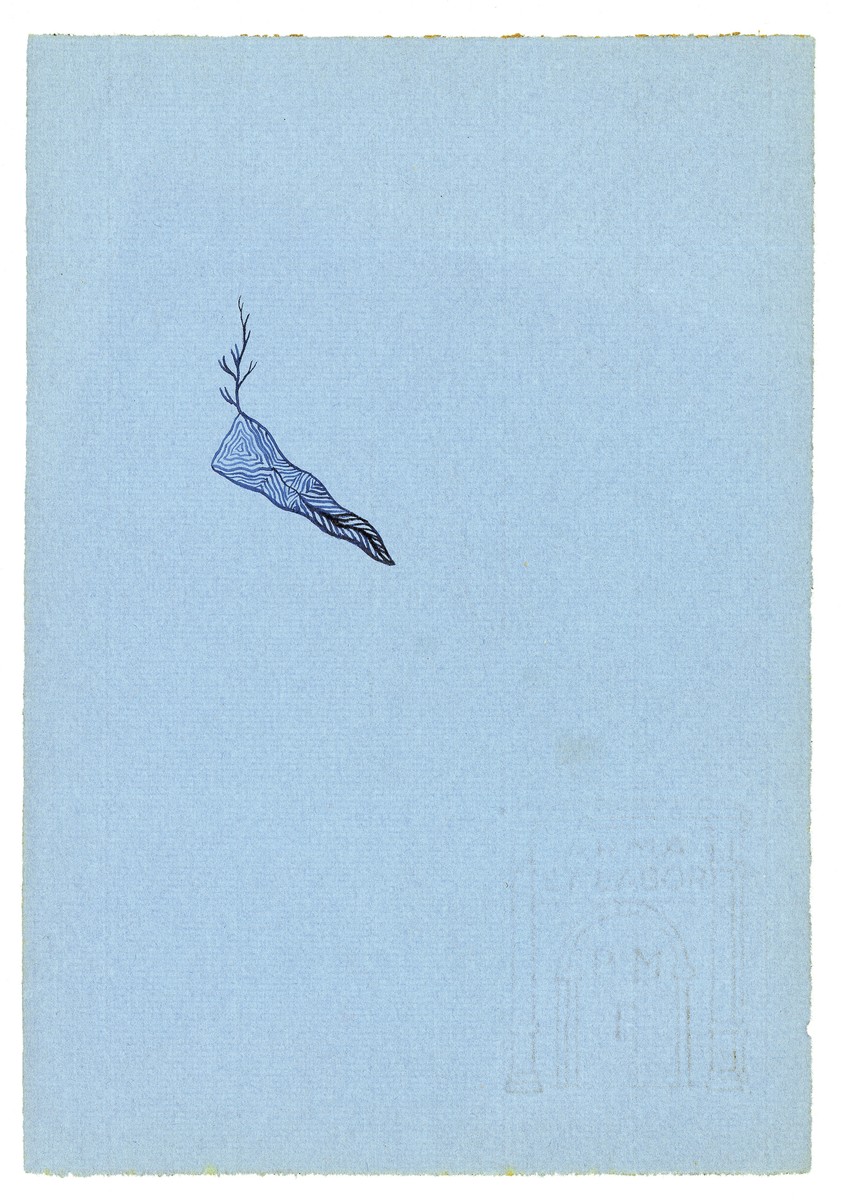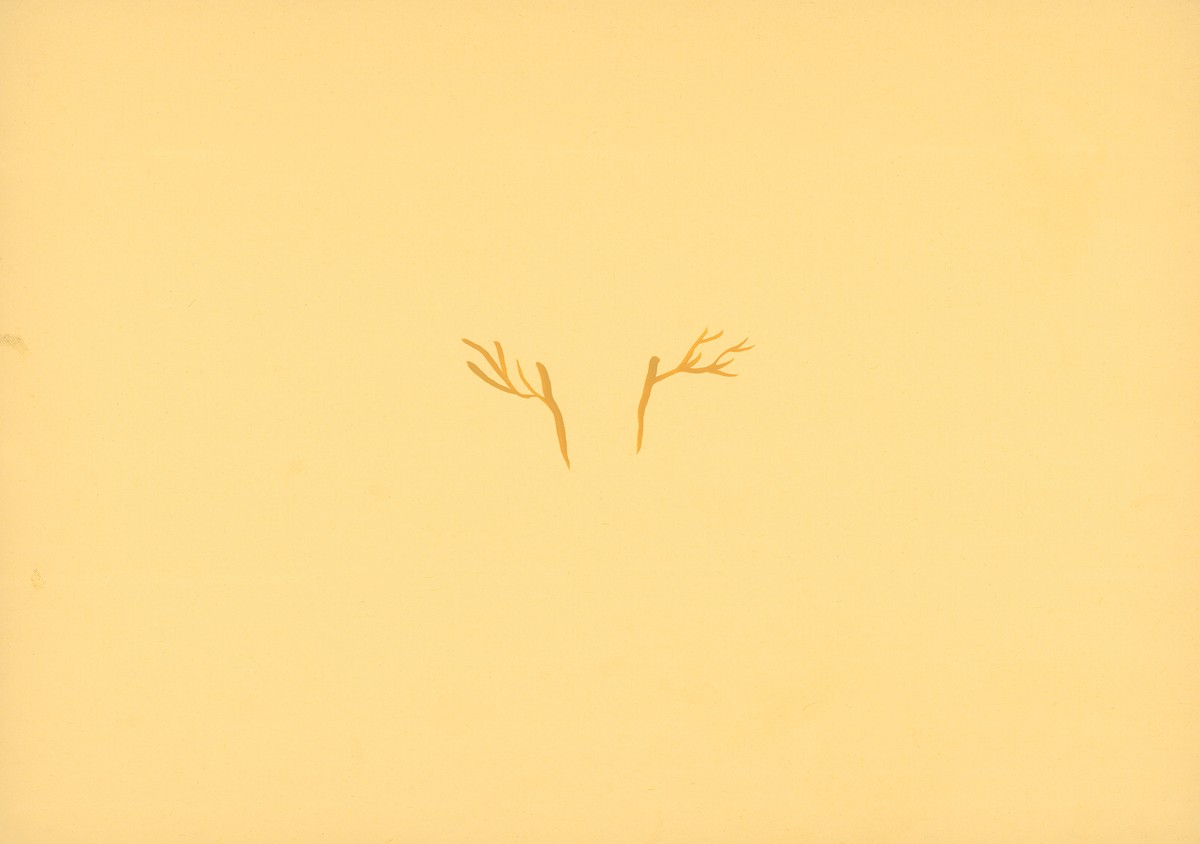EDE (Eleonora Di Erasmo) – It was a revelation to see your drawings for the first time and discover you trained even earlier as a visual artist and then embarked on your career as a musician. Everything seems to take shape so spontaneously, with nothing responding to a precise pattern, like those visionary shapes release all the energy emanating from a zero point, from the origin of all things. What was your first encounter with the visual arts and where does this imagery of yours originate?
DB (Devendra Banhart) – Growing up in Venezuela in the 80’s the most interesting art I came across belonged to the graphics of early Powell Peralta skateboards, the guts of locusts (I have very vivid memories of coming across trampled locusts on soccer fields and being more interested in the spectrum of colors that their guts were oozing out than in the game), Fernando Botero (my grandmother was a fan and what kid doesn’t love seeing exaggerated balloon like beings?) and Carlos Cruz Diez (who you would literally be walking on as his art was on the actual street)…. At the time, kinetic art was all the rage but I was too young to know anything about that. Anyways, these are my earliest memories of an art kind of feeling, a sense that something different was happening amidst the regular world, the intuition that maybe a hidden symbolic language exists behind everything…. Later on when I moved to California my neighbor was Lita Albuquerque, who completely changed my life and showed me an entire world by showing me her work, the art books in her library and by introducing me to the closest thing to a sister that I have in her daughter the sculptor Isabelle Albuquerque.
EDE – The series of drawings entitled “Haru”, dedicated to Harold Budd, remind me in the drafting and energy of the sign, as well as in the rhythm of the chiaroscuro, of Cy Twombly's early experiments on paper in the 1950s. In a recent interview with The Broad, you stated how the artist's work has had a strong influence on your research. Can you tell me about your first encounter with Cy Twombly's work? How has it influenced you, not only as a visual artist, but also as a musician and poet?
DB – It goes back to Lita Albuquerque’s library in California, I would spend entire days in there, she had dozens of Twombly’s monographs and their influence is impossible for me understate, I truly fell in love and remember weeping because I had never seen work that was so immediately intimate, so simultaneously messy and clean, it was like seeing the difference between telling the truth and making something up, I couldn’t believe I was looking at a page that contained work that was clearly, palpably in constant motion… it was dizzying and I still get that feeling from Twombly, they are still in motion….
As for the Haru series, on Harold Budd’s In the Mist album there is a song called Mars and the Artist (after Cy Twombly), it’s an exquisite piece that feels like listening to Twombly’s incomparable line work in motion (or maybe slow motion). I wanted to see how Budd’s music would affect my lines and didn’t want to be so direct as to choose the aforementioned song, so I went with Haru Spring, playing it on repeat for days and just letting the song lead my hand. It got a bit spooky at one point as I felt like I suddenly had very little autonomy, then trust set in and a flow was established, it was fascinating and felt very collaborative.
EDE – I would like to delve deeper into the concept of creative process. During his military service as a cryptographer in Washington, D.C. in 1953, on weekends Cy Twombly used to rent a hotel room in Augusta where he drew at night in the dark, sometimes laying the paper on parts of his own body to trace the contours, in a kind of performative act. This practice allowed him to exorcise the repetitiveness imposed by his work as a cryptographer during the day and to rediscover the freedom of the sign in the silence of the night in an intimate and meditative space. Augusta drawings seem almost like interior maps and somehow bring me back to your definition of 'non-place' in relation to the creative process, which you mentioned in your conversation with the poet Richard Milazzo[Galleria Mazzoli [ed.] Devendra Banhart. Sphinx Interiors & Other Works. Modena. Galleria Mazzoli Editore, 2014: p. 27]. Can you tell me about your 'non-place' and the process by which images and words take shape in this inner space?
I find this idea of a non-place very promising, adventurous even, like a trek through the jungle, a mysterious path charged with potential…. Basically it’s how rituals and ceremonies can change the world by changing your state of mind. To be more specific in terms of art, when our intention is to cultivate an inner and outer environment of non-place in order for something new to emerge, there is an emptying out that must first take place, a casting off of what one no longer needs, in order to have open hands to hold something new. The rub is that this is more difficult and painful than it sounds, if anything it’s certainly challenging!
Then there’s the non-place created by an “irrational” ritual like putting your head to someone’s feet or singing a song in a made up language, drawing, painting, or spending time thinking about what a non-place is!

